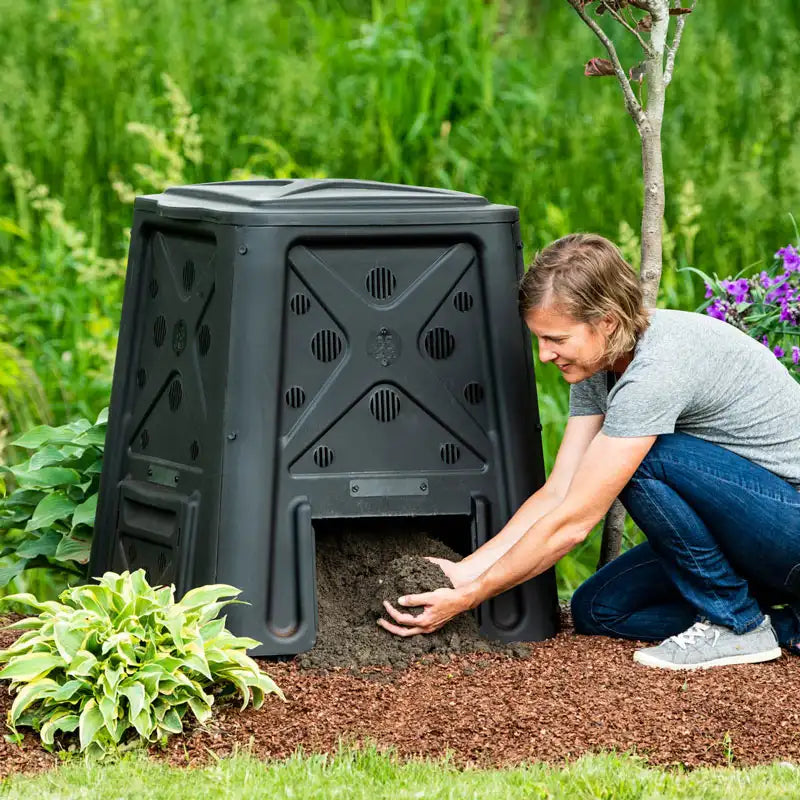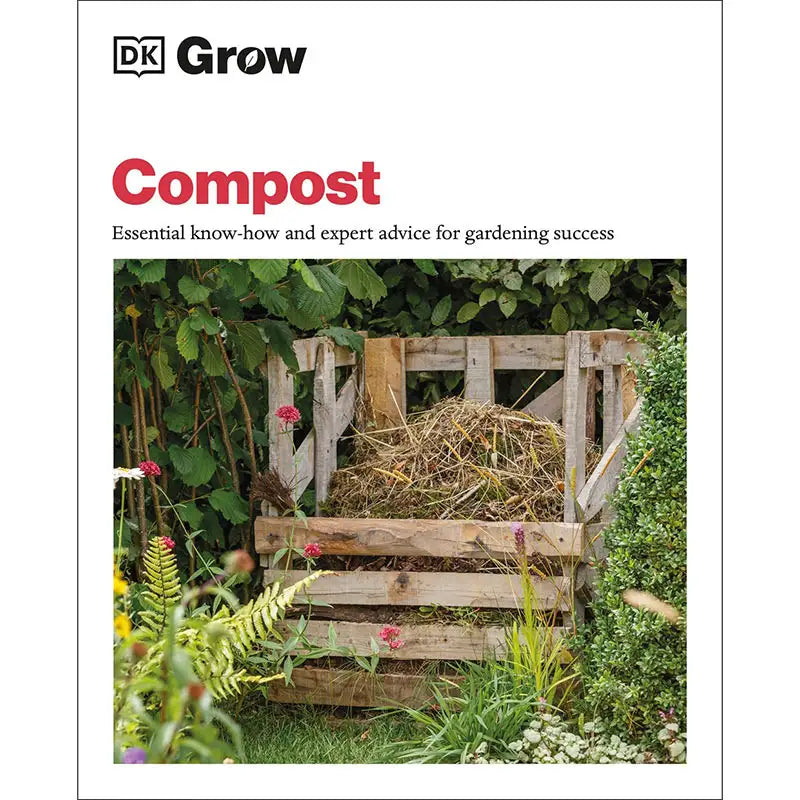The Many Faces of Mushroom Soil
A couple of shows ago, our Question of the Week concerned what kind of {quote} ‘soil’ you should fill your raised beds with. (You can read that article in full at the Gurney’s website; click on “Garden Resources” at the top of the page and scroll on down to You Bet Your Garden—or listen to that show at the WDIY website, or the Podcast of your choice.
We discussed compost, screened topsoil, perlite, how to test bulk material before you buy and lots more. But our questioner, Bernadette in Allentown, also asked about mushroom soil, to which we replied: “there are at least four different kinds of {quote} “Mushroom soil”: fresh and aged regular; and fresh and aged organic. The differences are important and will take another Question of the Week to fully explain”, which we are here to do today, beginning with…
Q. Diane in Mount Juliet (just outside of Nashville), who writes: “I have raised beds built to your specifications. They are several years old and the soil is getting compacted (no, I do not step in them!) and they need to be topped off.
My nursery carries mushroom compost, as well as “raised bed soil” (their blend of {quote} ‘organic soil’ composed of topsoil, compost, soil conditioner and sand).
I was thinking of using half and half but I know nothing about mushroom compost. Your thoughts?”
A. Before we begin, I must remind our Merry Mouseketeers that there is no such thing as {quote} “organic soil” available for purchase. Your nursery’s so-called organic blend contains topsoil (not organic unless it was collected at a certified organic farm or my garden), ‘compost’ (which can be certified organic but such stuff is hard to find), sand (presumably for drainage, but what kind of sand? There are different types for different uses), and their mysterious “soil conditioner”, whatever that may be.
Anyway, mushroom soil (aka mushroom compost, spent mushroom soil, mushroom substrate, etc.) can be a very rewarding compost alternative, but you have to know exactly what you’re getting:
‘Regular’ mushroom soil is a blend of ingredients like fresh horse manure (including the bedding), poultry manure, ground up corn cobs, gypsum and other locally available ingredients.
It goes into the mushroom growing houses ‘fresh’ (as in: still steaming hot) in trays that are inoculated with spores of the desired mushroom variety. These trays are kept in a dark humid environment until their mushrooms are the correct size for harvest and then the growing medium is re-used once or twice, after which it is replaced by new material.
Although the replaced material is sometimes called ‘spent’, its nutrients are only ‘spent’ growing fungi, and it has lots of plant growing power left.
“Fresh” Mushroom soil is just like it sounds: fresh out of the mushroom house, steaming, stinky and hot as Hades. Fresh mushroom soil is widely available, but it is not ready for use. Farmers and gardeners with space for storage will often order a truckload—a real truck typically holding around 16 tons—and allow it to compost down for a season. It’s theoretically ready to use when the pile has greatly reduced in size, is no longer hot to the touch and doesn’t stink any more.
But ANY bulk material should be tested before use. Although fresh mushroom soil is typically steamed to kill weed seeds, it could still be full of herbicides, even after composting down; so use the ‘two container’ test described in the ‘fill your beds’ article referred to earlier. If the new sprouts that emerge in a planted pot look awful, it means herbicide levels could be high enough to kill your plants.
“Aged” mushroom soil is just like the above, but it has been aged for you, hopefully in windrows where the material is turned constantly, which can help reduce herbicide residues. It will come in a smaller delivery vehicle and should have little to no smell or heat. You should test this material for weeds and herbicide residue BEFORE delivery. Or before you buy a load to cart home in your pickup truck.
Whether it was professionally aged or you aged it yourself, don’t use mushroom soil to start your seeds or apply it around plants that are less than six weeks old.
BONUS: A high-quality supplier of bulk compost and/or mushroom soil should be able to supply you with a professional analysis of the material. Ask for the paper! Pay special attention to the pH, so you can adjust its acidity or alkalinity if necessary. If the results show that it’s high in salt (from the horse manure), rinse it in small batches before use and use the leftover ‘compost tea’ to feed salt-resistant plants. (You’ll find lots of lists online; stick to reputable sources.)
Organic mushroom soil. While large commercial mushroom operations tend to be isolated in a couple of places across the country (like Pennsylvania), small organic mushroom growers can be located anywhere. So do a search and maybe you’ll get lucky.
And finally, for more information on any kind of purchased compost, check out the website of the US Composting Council, especially their STA (seal of Testing Assurance) program. The Program includes Compost Technical Data Sheets (CTDS) showing test results, a list of ingredients, and recommended directions for use.
We discussed compost, screened topsoil, perlite, how to test bulk material before you buy and lots more. But our questioner, Bernadette in Allentown, also asked about mushroom soil, to which we replied: “there are at least four different kinds of {quote} “Mushroom soil”: fresh and aged regular; and fresh and aged organic. The differences are important and will take another Question of the Week to fully explain”, which we are here to do today, beginning with…
Q. Diane in Mount Juliet (just outside of Nashville), who writes: “I have raised beds built to your specifications. They are several years old and the soil is getting compacted (no, I do not step in them!) and they need to be topped off.
My nursery carries mushroom compost, as well as “raised bed soil” (their blend of {quote} ‘organic soil’ composed of topsoil, compost, soil conditioner and sand).
I was thinking of using half and half but I know nothing about mushroom compost. Your thoughts?”
A. Before we begin, I must remind our Merry Mouseketeers that there is no such thing as {quote} “organic soil” available for purchase. Your nursery’s so-called organic blend contains topsoil (not organic unless it was collected at a certified organic farm or my garden), ‘compost’ (which can be certified organic but such stuff is hard to find), sand (presumably for drainage, but what kind of sand? There are different types for different uses), and their mysterious “soil conditioner”, whatever that may be.
Anyway, mushroom soil (aka mushroom compost, spent mushroom soil, mushroom substrate, etc.) can be a very rewarding compost alternative, but you have to know exactly what you’re getting:
‘Regular’ mushroom soil is a blend of ingredients like fresh horse manure (including the bedding), poultry manure, ground up corn cobs, gypsum and other locally available ingredients.
It goes into the mushroom growing houses ‘fresh’ (as in: still steaming hot) in trays that are inoculated with spores of the desired mushroom variety. These trays are kept in a dark humid environment until their mushrooms are the correct size for harvest and then the growing medium is re-used once or twice, after which it is replaced by new material.
Although the replaced material is sometimes called ‘spent’, its nutrients are only ‘spent’ growing fungi, and it has lots of plant growing power left.
“Fresh” Mushroom soil is just like it sounds: fresh out of the mushroom house, steaming, stinky and hot as Hades. Fresh mushroom soil is widely available, but it is not ready for use. Farmers and gardeners with space for storage will often order a truckload—a real truck typically holding around 16 tons—and allow it to compost down for a season. It’s theoretically ready to use when the pile has greatly reduced in size, is no longer hot to the touch and doesn’t stink any more.
But ANY bulk material should be tested before use. Although fresh mushroom soil is typically steamed to kill weed seeds, it could still be full of herbicides, even after composting down; so use the ‘two container’ test described in the ‘fill your beds’ article referred to earlier. If the new sprouts that emerge in a planted pot look awful, it means herbicide levels could be high enough to kill your plants.
“Aged” mushroom soil is just like the above, but it has been aged for you, hopefully in windrows where the material is turned constantly, which can help reduce herbicide residues. It will come in a smaller delivery vehicle and should have little to no smell or heat. You should test this material for weeds and herbicide residue BEFORE delivery. Or before you buy a load to cart home in your pickup truck.
Whether it was professionally aged or you aged it yourself, don’t use mushroom soil to start your seeds or apply it around plants that are less than six weeks old.
BONUS: A high-quality supplier of bulk compost and/or mushroom soil should be able to supply you with a professional analysis of the material. Ask for the paper! Pay special attention to the pH, so you can adjust its acidity or alkalinity if necessary. If the results show that it’s high in salt (from the horse manure), rinse it in small batches before use and use the leftover ‘compost tea’ to feed salt-resistant plants. (You’ll find lots of lists online; stick to reputable sources.)
Organic mushroom soil. While large commercial mushroom operations tend to be isolated in a couple of places across the country (like Pennsylvania), small organic mushroom growers can be located anywhere. So do a search and maybe you’ll get lucky.
And finally, for more information on any kind of purchased compost, check out the website of the US Composting Council, especially their STA (seal of Testing Assurance) program. The Program includes Compost Technical Data Sheets (CTDS) showing test results, a list of ingredients, and recommended directions for use.



